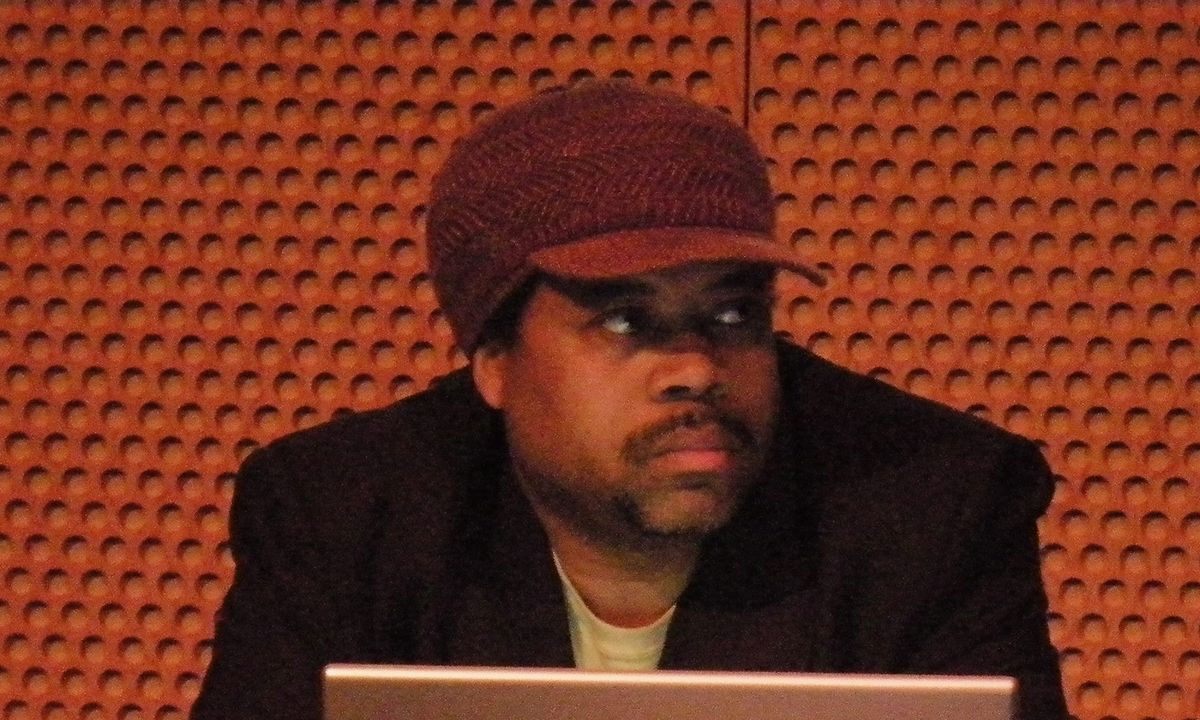The renowned cultural critic, musician and producer Greg Tate died on 7 December at age 64, leaving behind an expansive body of work that touched on almost every cultural topic one could imagine including art, literature, music and more. His writings on hip hop and art in particular were incredibly influential and became models for his approach as a writer and journalist. Mixing elements of poetry with razor-sharp observations and omnivorous references, Tate helped create a new kind of criticism that profoundly changed the field from the inside out.
While the worlds of art and music criticism can often feel incredibly insular and impenetrable, Tate created expansive space for himself and others through his powerful interrogations of culture, race, gender and other pressing issues in America. Through his inclusive, historically rooted approach to writing he had an enormous influence on a generation of artists, scholars, musicians and critics.
After finishing a degree in journalism at Howard University, Tate moved to New York City in 1982, a year after he began writing for The Village Voice as a freelancer. He joined the publication in a full-time capacity in 1987. What started off as reviews for the Voice quickly evolved into pieces of cultural criticism that became emblematic of his style and helped shape Tate’s career as a critic, expert on Black music and art, and professor. The work he produced during this period would give way to larger projects that would fuel his career over the ensuing decades.
Tate’s writing critically engaged cultural theory and was infused with many nuanced takes on various musical and artistic movements. His writing style was complex yet approachable, animated and filled with references that were centered in a larger historical exploration of Black culture and beyond. Hua Hsu, a staff writer at the New Yorker, described Tate’s writing this way in a 2016 essay: “His best paragraphs throbbed like a party and chatted like a salon. They were stylishly jam-packed with names and reference points that shouldn’t have gotten along but did.” Tate’s writing was honest, complex and visionary. It pushed and educated readers while also showing people that criticism could and should be so much more creative than it often is.
Tate’s 1989 Village Voice article “Jean-Michel Basquiat, Flyboy in the Buttermilk: The Crisis of the Black Artist in White America” sought to unpack the larger racial complexities intertwined with the late artist’s career and impact on the art world and beyond. Tate also considered Basquiat’s place within art history as the most successful artist of colour at that time and how other critics were trying to place him in a particular category rather than engaging with his work and life holistically. Tate rightfully checked them and helped to situate Basquiat’s career within the Black lived experience while also addressing his distinct complexities as a person and artist.
Three years later Tate published Flyboy in the Buttermilk: Essays on Contemporary America, a volume containing over 40 essays (including the Basquiat article) that remains one of his most important and influential works. The essays collected therein showcase the breadth and depth of Tate’s genius while also encapsulating many of the larger themes and formal motifs of his writing. The book had an indelible impact on the field of criticism and quickly became required reading in many university art and cultural studies programmes.
In subsequent decades Tate was a regular contributor to numerous publications including the New York Times, Rolling Stone and others. He also taught at Yale University, Columbia University, Brown University and Williams College. Over the course of four decades he helped to shape the field through his pedagogy and shift the landscape of cultural criticism for generations to come.


